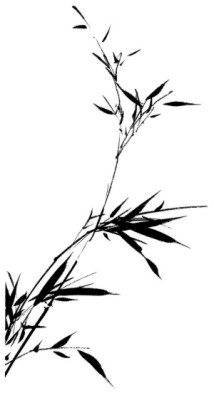

|
|
The embodiment of grace
Bamboo features prominently in traditional Chinese paintings. It has been just as important a model for Oriental artists as has the human body for artists in the Western world. The first chapter of the great book on classical painting, The Mustard Seed Garden Manual of Painting, is devoted to bamboo. The first brushwork exercise assigned to beginning students is to paint bamboo as they learn to draw lines. Seizing the visionIn painting bamboo, the artist proceeds by stages, starting with the stem, and moving on to the nodes, the branches and then the leaves. For Chinese painters, it is important to "let the bamboo grow within themselves," and to hold back until they can see the entire composition in their minds. Then they must seize the vision and translate it to paper, with strong, quick and expressive brushstrokes. The result should represent one flowing idea. Bamboo's virtuesBamboo is also a symbolic figure, ascribed great virtues. It represents rectitude and grace, for its stems grow straight and end in fine tips. It signifies humility, for the core of the stem is hollow. It incarnates youthful spirit, because it remains green even in winter. Finally, it is associated with simplicity and purity, adorned only with its plain leaves. | The Architecture | The Elements | The Activities | The Society of the Chinese Garden | |


